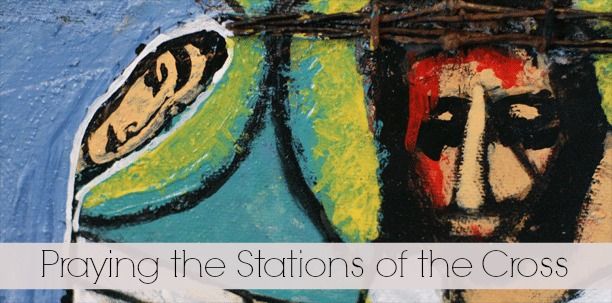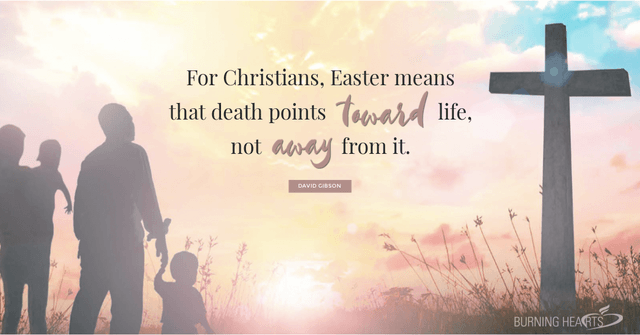The Making Disciples Today Blog has reflections to help you grow in your journey of missionary discipleship, reviews on recommended Catholic evangelization resources, and practical insight on how to evangelize in your daily life.
- Details
- Written by Burning Hearts Team
The Stations of the Cross refers to the depiction of the final hours (or Passion) of Jesus, and the devotion commemorating the Passion.
All Catholic parishes have depictions of Christ’s Passion and death called the Stations of the Cross, The Way of the Cross or Via Dolorosa (way of suffering) In many churches, the Stations of the Cross are depicted in stained-glass windows, but other media are used as well, including paintings and stone or wood carvings and sculptures. Often on Friday evenings during Lent, you can find a parish that’s open with Catholics meditating and saying prayers in unison before each of the 14 stations.
The Stations of the Cross is a Lenten devotion that offers witness to Jesus’ Passion and Death. Often, the Stations of the Cross is an action prayer. Catholics walk to the fourteen stations of the Way of the Cross and stop to pray at each one. At each station we use our senses and our imagination to reflect prayerfully upon Jesus’ suffering, Death, and Resurrection, and to simply experience the visual images to reflect on Christ’s love for us.
We've listed the best Way of the Cross prayer resources for...
- beginners who are new to this form of prayer,
- families and those who want to pray the stations of the cross with children, and
- busy adults who may not be able to join your parish Stations of the Cross prayer time.
- Details
- Written by Burning Hearts team
In a way, Kristin Bird was a little surprised to find herself standing in a classroom at Mary Mother of the Church Pastoral Center on Saturday, Oct. 22, offering a breakout session entitled “From Encounter to Invitation” as part of the Archdiocese of Milwaukee’s Eucharistic Revival Preparation Day.
Bird, who runs Burning Hearts Disciples in Oshkosh, spent 15 years as a youth minister, DRE and confirmation director before starting her organization eight years ago.
“If you would have told me eight years ago that dioceses and parishes were going to want to re-think so much of what we do as a Church, I probably would have laughed at you, and said there’s no way,” Bird said.
During her time working in the Church, she has seen it use many buzzwords and programs to try to spread its message.
“I found myself thinking revival was kind of a pipe dream,” Bird said. “It is fantastic to see the Church at a place where we’re not only ready for it, but we’re also planning for it, preparing for it and intentionally looking at how we can bring about revival for our parishes and for our people.”
Ultimately, the goal of the Eucharistic Revival is evangelizing.
- Details
- Written by Edward P. Hahnenberg
Discernment is the process of finding God’s will in our lives. It is the process of listening for and responding to God’s call. It is the process of discovering one’s vocation. We get ourselves into trouble, however, when we imagine that God’s will is “out there” and apart from us.
We run into problems when we see our vocation as some kind of riddle that we have to decipher or some secret message that we have to decode. Such an approach transforms God’s plan into a set of arbitrary instructions -- directions for life that we cannot seem to find. Under such a view, discernment becomes scary. We don’t know what God wants. And so we search frantically for some sign telling us what to do. Or we just give up.
Discernment is difficult, but it is not difficult because it is a puzzle that we can’t figure out. It is difficult because it involves the coming together of two infinite mysteries: God and me. This realization helps us to see that whenever we learn something true about God, we learn something true about ourselves. And whenever we learn something true about ourselves, we learn something true of God.
- Details
- Written by David Gibson
The household’s older children erupted into endless shrieks of delight when the phone call came from the hospital announcing the birth of their baby sister and our newest grandchild. Two of the children, overwhelmed by excitement, raced out the door to tell the good news to their neighbors.
New babies are such wonders. Like magnets, they attract neighbors and relatives, family friends and many others, who soon arrive to visit. What everyone wants most is to see the new baby.
I always am amazed at the amount of time people, myself included, can spend simply watching a baby’s every twist and turn. Here, after all, is youth in a pure form. A long, winding journey awaits the child, but this present, newborn moment usually is one of immense hope and happiness.
Allow me now to fast-forward eight or nine decades to the scene of an 85th or 95th birthday party for someone born in 2014. The party may be loads of fun and represent a genuine celebration of a life. But will it erupt with delight at the great promise in this person’s life then and there? Maybe not.
To the extent possible, society seemingly suggests, old age should be delayed in favor of youthfulness. Even when an older person’s experience, insights and love are valued greatly, old age itself may be feared. So a sense may lurk in the background at our birthday celebration that the time of death is drawing disturbingly close.
Don’t most of us find it hard to feel happy about death? Isn’t death a dismal outcome for life?





